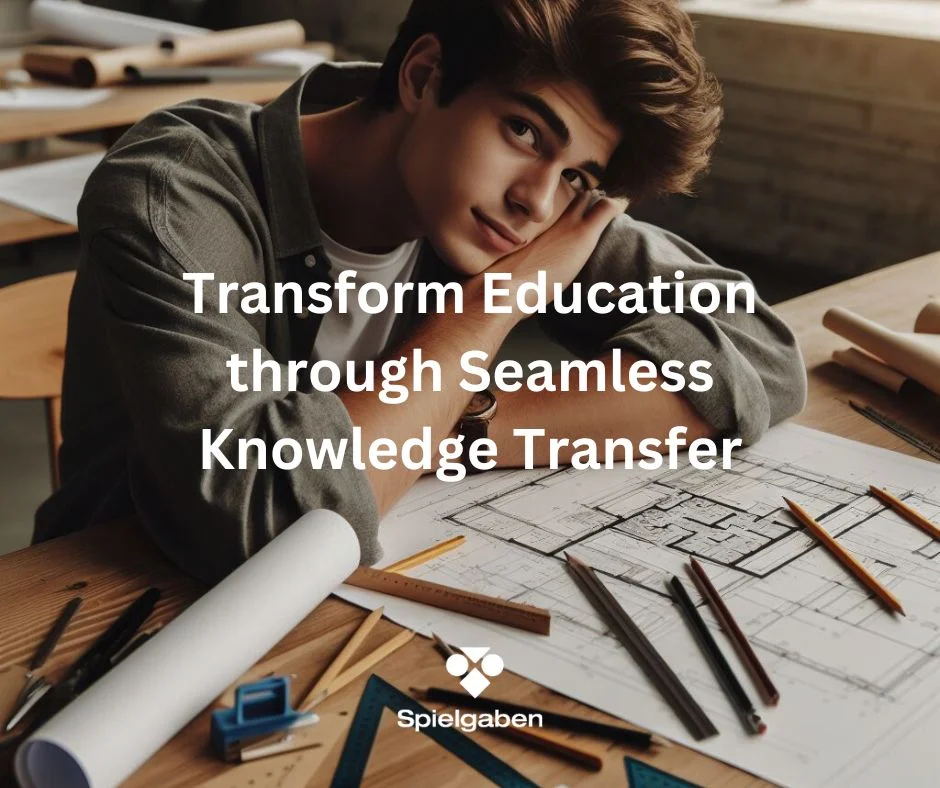Unlocking the Puzzle: Transforming Education through Seamless Knowledge Transfer
The most disturbing problem in formal education is the problem of transfer.
Unfortunately, transfer is also something that, despite more than a century of intense work and research, has largely failed to occur in formal education.
The psychologist Robert Haskell has said, “Despite the importance of transfer of learning, research findings over the past nine decades clearly show that as individuals, and as educational institutions, we have failed to achieve transfer of learning on any significant level.”
For instance, it has been known for years that students who enter college having taken a high school psychology course do no better than students who didn’t take psychology in high school.
Similarly, the developmental psychologist, Howard Gardner highlighted that even student earning honors in college physics often struggle with solving basic problems presented in slightly different formats.
So what explains the disconnect? Why have educational institutions struggled to demonstrate significant transfer, if transfer is something we all need to function in the world and be more productive in real life?
Most formal learning is woefully not practical.
The simplest way to be practical is to learn by doing. If your child can spend a good portion of his learning time just doing the thing he wants to get better at, the problem will likely go away.
To address this gap, here are 7 actionable strategies for enhancing the effectiveness of your child’s learning.
1. Relevance Matters
Research shows that when learning is relevant, students can connect what they’re learning to what they already know and build new neural connections and long-term memory retention.
So if your child wants his learning to be engaging and to be able to remember it in other contexts, it’s important to establish relevance early on. Think about how your child might apply what he is learning today in his future job or everyday life and then try to tie it to some of his short or long-term goals.
2. Reflect and Explain
Before your child can transfer knowledge to new contexts, he needs to understand the concept inside and out, which is why it’s important to take time for reflection and explanation. Research shows that self-explanation can help to identify any incorrect assumptions, lead to a deeper understanding of the material, and ultimately promote knowledge transfer to real-life situations.
By articulating concepts in his own words, children deepen comprehension and enhance knowledge transfer.
3. Identify knowledge gaps
Without a complete understanding of the concept or information your child is learning, transferring it to new contexts will be more difficult. With this in mind, it’s important to identify any gaps in his knowledge and then help him work on strengthening his weaker areas.
One excellent way to do this is through practice testing, as he’ll be able to see exactly what he is consistently getting wrong and what topics he has yet to master. Similarly, practice tests will also show him which topics he has mastered, allowing him to focus on the areas that need the most work.
4. Set Clear Learning Goals
Define specific, achievable learning objectives to guide your child’s educational journey. Clear goals foster focus and enable meaningful progress tracking.
Setting clear learning goals will give your child a better understanding of what he is trying to get out of his learning and how he might later transfer that knowledge and apply it in his work or personal life. If he knows what the expected learning outcomes are, he’ll also be able to focus on the right material.
5. Practice generalization
Generalization is the ability to transfer the knowledge or skills in one setting to a new one. It’s all about seeing the bigger picture and looking for more widely applicable rules, ideas, or principles.
For example, a child that learns to stack wooden blocks could generalize that skill and later use it to build more complex and structurally challenging creations
So when studying a new topic or concept, let your child think about his past lessons or experiences and look for patterns and relationships. He can then determine whether these generalizations can be supported by other evidence he know of.
6. Embrace Social Learning
If your child study alone most of the time, it can help to have a chance to discuss it with others. This allows him to explain what he is learning in his own words and apply his knowledge to new situations. Research also shows that collaborative learning promotes engagement and benefits long-term retention.
7. Apply Learning Daily
Applying what your child has learned at school to real-world problems takes a lot of practice, so it’s important to look for opportunities to apply what he is learning in his everyday life.
“For example, if your child wants to become an architect and has been reading and studying architectural design, it would be much more beneficial for him to try designing simple buildings and houses using the knowledge he has gained.
This practical application will help him quickly understand the difference between theory and practice and fill any gaps by learning additional skills such as using REVIT software, which is commonly used in the architectural industry. This will make your child stand out from other students who have only learned standard knowledge in school without applying it in practical contexts.”
Conclusion
The issue of knowledge transfer remains a significant challenge in formal education despite decades of effort.
To address this gap, we’ve outlined seven actionable strategies to enhance learning effectiveness. By prioritizing relevance, fostering reflection, identifying knowledge gaps, setting clear goals, promoting generalization, embracing social learning, and encouraging daily application, we can transform our children’s education into a seamless and practical experience.
By implementing these strategies, we empower our children to not only absorb knowledge but also apply it confidently and creatively in diverse situations, ultimately preparing them for success in both academic and real-life endeavors.





